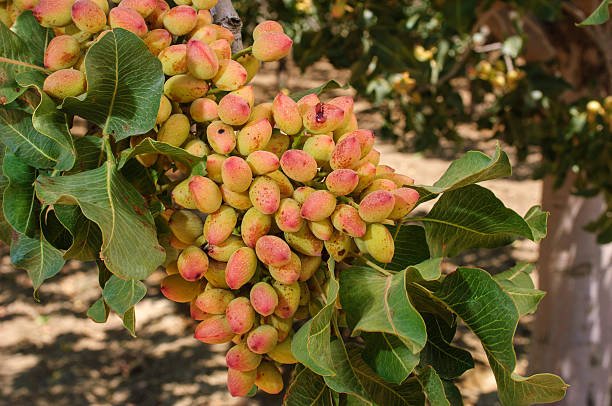Where Are Pistachios Grown in India?
India, known for its rich agricultural diversity, is home to several regions that are perfect for pistachio farming. Pistachios, or pista, are a high-value crop that thrives in dry, semi-arid, and temperate climates. The cultivation of pistachios has been growing steadily, and several states in India have emerged as significant producers of pistachios. This article explores where pistachios are grown in India, the ideal growing zones, and the potential for expansion.
Key States for Pistachio Farming in India
- Rajasthan Rajasthan is the undisputed leader in pistachio production in India. The state’s arid regions, particularly Barmer, Jaisalmer, and Pali, are famous for their pistachio farms. The dry climate and alkaline soils provide the perfect conditions for pistachio trees to flourish. Rajasthan’s pista production contributes a significant share of the national yield.
- Gujarat Gujarat, especially the Kutch region, is another top producer of pistachios in India. The semi-arid climate of Gujarat offers an ideal environment for pistachio farming. The state’s agricultural infrastructure supports the growth of pistachio farms, making it one of the largest pistachio-growing areas in the country.
- Kashmir Although pistachio farming in Kashmir is relatively new, the region is gaining attention due to its cool, dry climate and fertile soils. Areas like Pahalgam and Anantnag have started to cultivate pistachios, with farmers experimenting with new methods to optimize production.
- Haryana Haryana has also shown promise in pistachio farming, particularly in the districts of Bhiwani and Fatehabad. With the state’s growing interest in horticultural crops, pistachio farming is expected to grow in the coming years, providing farmers with an alternative cash crop.
- Punjab In Punjab, the potential for pistachio farming is being explored, especially in areas like Bathinda and Mansa. The state’s favorable soil and climatic conditions are suitable for pistachio cultivation, making it an emerging pistachio-growing state.
Ideal Pistachio Growing Zones
Pistachios require specific climatic and soil conditions to thrive. The ideal pista tree growing zones in India share certain characteristics:
- Climate: Pistachio trees thrive in regions with a hot, dry climate, with average temperatures between 30°C to 40°C.
- Soil: Well-drained, sandy-loam soils with a slightly alkaline pH (7.5-8.5) are ideal for pistachio farming.
- Rainfall: Pistachio trees require minimal rainfall, as excessive moisture can harm the tree. However, they need adequate irrigation during dry spells.
- Altitude: Pistachios are usually grown at altitudes between 500-1500 meters above sea level.

Other Emerging Regions for Pistachio Farming
While Rajasthan, Gujarat, and Kashmir dominate pistachio production, other states like Madhya Pradesh and Uttarakhand are also experimenting with pistachio cultivation. With research and advancements in farming techniques, these states could soon emerge as new centers for pistachio farming.
The Future of Pistachio Farming in India
As demand for pistachios continues to rise both domestically and internationally, the future of pistachio cultivation in India looks promising. With advancements in agriculture and increased government support for dryland farming, more farmers are likely to adopt pistachio cultivation as a viable option.
Conclusion
India’s pistachio farming landscape is expanding, with major states like Rajasthan, Gujarat, and Kashmir leading the way. Understanding the ideal pistachio growing zones and the agricultural techniques involved is crucial for farmers looking to tap into this lucrative industry. As awareness grows and techniques improve, pistachio farming will play a vital role in India’s agricultural future.
A Complete Guide to Pista Farming in India: Everything You Need to Know
Pistachios in India: The Complete Guide to Cultivation and Harvesting









